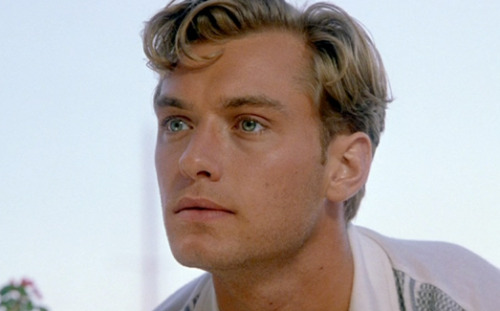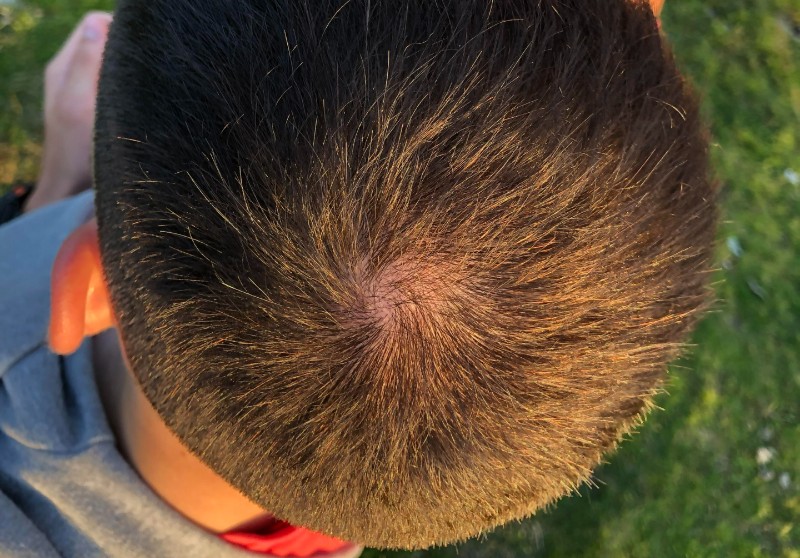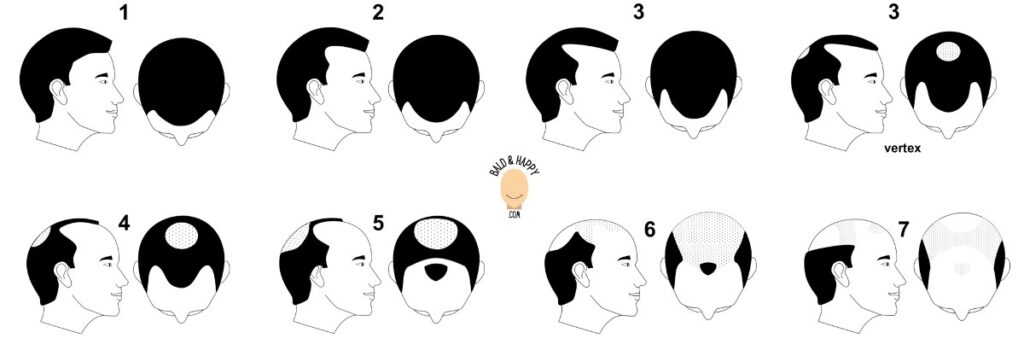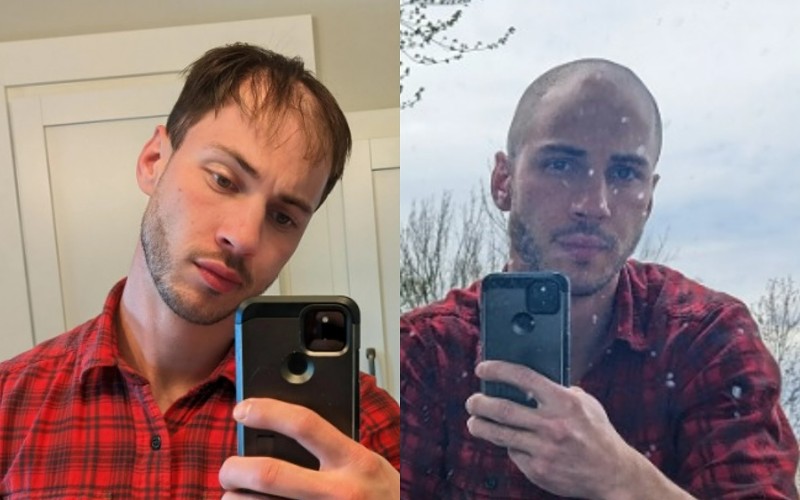
Discovering your hair is so thin you can see your scalp can be a moment filled with anxiety and questions. Are you beginning a journey towards baldness, or is it just a natural phase of hair thinning?
I’ve been where you are, seeing my scalp in my early 20s and grappling with the uncertainty of what comes next. I understand the confusion and the emotional toll it takes.
If you’re a man wondering if you’re creeping towards Male Pattern Baldness, this article is for you. We’ll explore not just the causes but also the effective solutions tailored to your needs, addressing everything from lifestyle changes and natural remedies to professional advice.
Key Things To Know:
- It’s more common than you think: Hair thinning is a frequent concern, affecting both men and women due to various reasons like genetics, hormonal changes, or age-related factors.
- Treatment options: There are multiple approaches to manage hair thinning, including over-the-counter products like Minoxidil, prescribed medications, and lifestyle adjustments.
- Prevention and care: A balanced diet, proper hair care, and stress management can significantly improve hair health.
- Expert consultation: Seeking advice from healthcare professionals or dermatologists can help find treatments and understand any underlying health conditions.
- Psychological aspect: Understanding the emotional impact of hair thinning is important. It’s okay to seek support and discuss your feelings.
Male Pattern Baldness: Why You Can See Your Scalp Through Your Hair
If you can see your scalp through your hair, it may be perfectly normal and nothing to worry about.
However, if you notice changes in the thickness of your hair over time, it may be due to the onset of Male Pattern Baldness.
Scientifically known as androgenetic alopecia, MPB is a common condition affecting a significant portion of the male population. By the age of 50, about half of all men experience some degree of MPB, which shows itself as a thinning crown, receding hairline, or both. This leads to increased scalp visibility.

There are a few potential causes of MPB, primarily involving genetic predisposition and hormonal factors, notably dihydrotestosterone (DHT), a derivative of testosterone. These hormones impact hair follicles, shortening their growth phase and gradually leading to thinner hair.
Additionally, age plays a critical role, with the likelihood of developing MPB increasing as men grow older.
Other factors could also be at play, and we’ll dive deeper into each one so you have a more comprehensive understanding of the causes and mechanisms behind Male Pattern Baldness.
But first, let’s answer a few common questions and concerns:
It’s normal to see your scalp when your hair is wet
When your hair is wet, hairs stick together forming clumps. The individual hairs are pulled into the same place, matting the hair down and exposing the scalp. A little scalp visibility is therefore nothing to worry about.

If your scalp is visible after your hair dries, you may have the same issue with hair products like wax and gel. It’s a good idea to apply less and use a dry-look hold product if you’re concerned about your hair being too thin for the wet look.
It doesn’t necessarily mean you’re going bald if you can see your scalp when your hair is wet. Everyone’s hair is different and if the scalp is showing excessively it may be a sign of balding or thinning hair. If you can see your scalp more than you used to, start taking pictures of your hair every couple of weeks and see if you notice a difference over time.
Chances are, if it’s just that your hair looks thin when wet, you’re experiencing more general, natural thinning as you age. It’s less likely to be Male Pattern Baldness, which is more noticeable in areas like the crown and hairline rather than all over.
However, if you are in the early stages of MPB, you will notice it more when your hair is wet.
Monitor hair thinning with a mirror
To check the extent of hair thinning, use a hand-held mirror or your phone’s camera to view the back of your head in a wall-mounted mirror.
Is the scalp particularly visible around the crown? When you pull your fringe backward, does your hairline seem further back than normal?
If so, you may be in the early stages of Male Pattern Baldness. It’s incredibly common, and although getting used to it can be hard, it definitely isn’t a disaster (yes, even when it comes to dating).
It’s normal to see your scalp under light
If your hair is thinning, a light will reflect more of your scalp. But most people will be able to see their scalp under light, especially if they have shorter hair.

Longer hair bends to cover the scalp, while short hair sticks up and doesn’t provide as much cover. If you have to shine a light directly onto your head to see your scalp, it doesn’t sound like you have much to worry about.
Some people notice their scalp more in photos due to the flash, but this is the case for everyone depending on your hairstyle and how directly the flash hits your head.
As a result, many people who eventually lose their hair first notice it thinning in photos where the flash bounces through their thin strands. But that doesn’t mean that everyone who sees their scalp under a flash will go bald.
Sometimes a certain hairstyle just pulls the hair and exposes the scalp at just the right angle. As mentioned above, wet-look hair products won’t help either, as they cause the hair to clump together and expose more of the scalp to the camera.
It’s normal to see your scalp when you lift your hair up
While it might be worrying the first time you see your scalp when you lift your hair, it’s quite common, especially if you have fine or thin hair.

Tiny hair follicles grow out of your scalp. If these follicles are spaced apart instead of tightly packed, light passing through makes your scalp more visible.
This is especially true if you have lighter-colored hair or if you’re standing in a bright area with lots of natural light.
However, if you’re noticing an excessive amount of scalp showing, or if it’s accompanied by thinning hair in other areas, it could be an early sign of male pattern baldness.
At this point, just monitor your hairline and crown over time. If it stays the same, it’s likely that you just have thin hair and haven’t noticed this before.
If the thinning progresses, you’re probably balding. The good news is that you’re aware of it, and you can take action. I’ve written a full guide on whether you should shave your hair when it’s thinning.
Long hair shows more scalp
Long hair can show more scalp due to the extra weight pulling the hairs away from each other at the parting.

Aesthetically, long hair is usually the wrong choice for someone who is experiencing hair loss. As well as the ‘pulling’ effect described above, it simply attracts attention to your hair and makes it more likely that people will focus here rather than on other physical and facial features.
Signs and symptoms of Male Pattern Baldness (MPB)
The onset of Male Pattern Baldness (MPB) is subtle, as the initial signs gradually become more pronounced over time.
The most common early symptom is a receding hairline, typically starting at the temples and forming an M-shape.
This is what happened to me – my temples started to thin and like so many others, I just tried to brush the hair forward to cover the expanding bald areas.

Eventually, what remained of my frontal forelock formed a small island of hair! I’d shaved my head before, so it was an easy choice to do so again. I buzzed it down, and never looked back.
Men whose hairline starts to recede may notice thinning at the crown of the head, either at the same time or shortly after. This can expand outward, leading to a more visible scalp.

This thinning process is usually a result of hair follicles shrinking under the influence of hormonal changes, primarily dihydrotestosterone (DHT). Over time, the hair in these affected areas becomes finer, until it eventually stops growing altogether.
Recognizing these early signs allows you to manage your MPB, whatever route you decide to take.
Typical MPB patterns and progression
The progression of Male Pattern Baldness (MPB) follows a typical pattern that leads to increased scalp visibility over time.
Initially, hair thinning becomes more noticeable, especially at the temples and crown, gradually exposing more of the scalp.
This process is categorized by the Hamilton-Norwood Scale, a widely recognized tool used to classify the stages of MPB:

The scale spans from minimal hair loss at Stage 1 to extensive loss at Stage 7. Understanding the stage you’re at is crucial in determining the correct treatment.
Shelly Beatty, Certified Trichologist at the Hair Loss Treatment Center of America, highlights common misconceptions and tailored approaches.
‘The biggest misconception most men have about hair loss is they believe there is nothing they can do about it,’ explains Beatty. For those early in the scale, like Stage II, she recommends Laser Hair Therapy, while advanced stages might require multiple hair transplants, depending on the available donor hair.
‘Best advice is to not wait for it to get any worse,’ she advises, stressing the importance of early intervention and ongoing monitoring, as ‘There is no cure for hair loss yet.’
The progression through these stages varies among individuals, with some experiencing a slower transition and others a more rapid progression. Understanding where you sit on the Norwood Scale can provide a useful benchmark for assessing the severity of your MPB and help you decide which course of action to take.
If you’re just noticing that your scalp is visible through your hair, you’re likely to be at stage 1, whereas if your hairline is already thinning at the temples you might be a stage 2. Either way, you have plenty of time to decide what to do:
Impact of MPB on men
Male Pattern Baldness (MPB) impacts more than just a man’s physical appearance. It often carries significant psychological and emotional consequences. Men experiencing MPB may confront a range of emotional responses, including taking a hit to their self-esteem and self-confidence.
My experience of hair loss was made much easier by the fact that I’d previously shaved my head at age 19, before my hairline started to recede. Because I was used to the look, it was an easy decision for me.
But for lots of men, visible hair loss can lead to an increased self-consciousness about their appearance, potentially affecting social interactions and personal relationships. In some cases, MPB can trigger more severe psychological impacts, such as anxiety and depression.
As well as addressing the physical effects of MPB, it’s important to seek support and find resources to manage the broader impact if you’re struggling to come to terms with hair loss.
Underlying causes of Male Pattern Baldness
The underlying causes of Male Pattern Baldness include factors like hormones, genetics, and environmental influences:
- Hormones: Dihydrotestosterone (DHT) plays a key role in hair follicle miniaturization, a hallmark of MPB.
- Genetic predisposition and inheritance: MPB has a strong genetic component, often inherited from family members. No, baldness doesn’t always skip a generation.
- Age and metabolic syndrome: As men age, the risk of developing MPB increases, often influenced by factors like metabolic syndrome.
- Environmental and lifestyle factors: External factors like stress, smoking, and UV exposure can exacerbate hair loss.
- Poor diet: A balanced diet rich in essential nutrients like omega-3 fatty acids, zinc, and biotin is crucial for maintaining hair health.
- Choosing the right hair care products: Selecting appropriate, gentle hair care products is key to managing MPB effectively.
- Avoiding harmful practices: Excessive hairstyling or using harsh chemicals can worsen hair thinning and should be avoided.
To accurately diagnose these causes, Beatty employs a specific method:
‘Our approach is to utilize our comprehensive 80-point Trichology Assessment,’ she explains. This detailed assessment aids in pinpointing the main contributors to hair loss and devising effective reversal strategies.
For atypical cases, Beatty emphasizes the importance of further investigation. ‘When submitted answers are not standard, they are encouraged to seek additional diagnostics,’ she adds, highlighting the role of a scalp biopsy to rule out other scalp conditions.
What to do if you notice you can see your scalp through your hair
There are lots of things you can do to slow or prevent hair loss caused by environmental and lifestyle factors. Here are a few things to try instead of reaching for the clippers:
Lifestyle changes to prevent or slow hair loss
A healthier lifestyle can have a positive impact on hair health. This includes eating a balanced diet rich in vitamins and minerals, avoiding smoking, and reducing exposure to harsh hair care products.
I didn’t help my hair loss by bleaching my entire head of hair white in my early 20s, just before I started receding. Eminem has a lot to answer for.
Stress reduction techniques
Chronic stress is a known contributor to hair loss. Techniques such as mindfulness meditation, yoga, deep breathing exercises, and getting enough sleep can help in managing stress levels, potentially reducing hair loss.
Exercise for hair health
Regular exercise reduces stress by releasing endorphins, chemicals in the brain that act as natural painkillers and mood elevators. It also improves sleep, which is often disrupted by stress, depression, and anxiety.
Exercise also offers a healthy distraction, allowing balding men to find some quiet time to break out of the cycle of negative thoughts that feed stress.

Hydration
Staying hydrated is essential for maintaining healthy hair. Drinking enough water means your hair stays nourished and strong, and it also helps in eliminating toxins from the body, which can contribute to healthier hair.
Alternative therapies
Herbal remedies and supplements can boost hair health. Deficiencies in riboflavin, biotin, folate, and vitamin B12 have been associated with hair loss. Herbal remedies like ginseng and green tea have also been used to support hair growth and scalp health.
Regular scalp massages can stimulate blood circulation to the scalp, encouraging hair growth. Using essential oils during massage may also be beneficial.
What if these changes don’t work?
Of course, if your hair loss is hormonal or genetic, the above will have less of an impact and won’t prevent Male Pattern Baldness.
If this is the case, there are more drastic ways you can fight hair loss:
Treatments and solutions
| Treatment / Course of Action | Description |
|---|---|
| Lifestyle Changes | Incorporate a balanced diet, reduce stress, and avoid harmful hair care practices to improve overall hair health. |
| Nutrition | Focus on a diet rich in essential nutrients like omega-3 fatty acids, zinc, and biotin to support hair growth and scalp health. |
| Hair Care Products | Choose gentle, suitable hair care products that are less likely to damage hair and exacerbate thinning. |
| Over-the-Counter Treatments | Use topical treatments such as minoxidil, which can help in slowing hair loss and stimulating hair growth. |
| Prescription Medications | Consider medications like finasteride and dutasteride, which are effective in reducing DHT levels and slowing hair loss progression. |
| Hair Transplant Surgery | Explore surgical options like hair transplant for a more permanent solution, especially in advanced stages of hair thinning. |
| Embracing Baldness | Accepting hair loss and opting for a clean-shaven look can be a practical and empowering choice for many. |
| Alternative Therapies | Herbal remedies, supplements, and scalp massages can support hair health and may be beneficial in conjunction with other treatments. |
My advice is to be confident enough in yourself to trim or shave it down – bald looks 1,000 times better than balding.
If you’re worried about whether people have noticed your thinning hair, then they probably have. But never worry about what they’ll think if you shave it off.
In my experience, most people respect you more for taking control, and you’ll find you get a lot more compliments on the new look than jokes about your bald dome.

FAQs
Thin hair doesn’t always indicate balding. Thinning can result from various factors like dietary deficiencies, stress, or medical conditions. However, if thinning is concentrated in specific patterns, it might suggest the onset of Male Pattern Baldness.
Hair can regrow after thinning, especially if the cause is temporary, such as stress or nutritional deficiencies. However, in cases of genetic male pattern baldness, regrowth without treatment is unlikely. Treatments like Minoxidil can help in some cases.
Seeing your scalp through your hair at a young age may suggest early hair thinning. Factors like genetics, hormonal changes, or health issues can contribute. It’s advisable to consult a healthcare professional for an accurate assessment.
To distinguish between thin hair and balding, look for patterns. Thinning that follows a specific pattern (like a receding hairline or bald spots) often indicates balding. General thinning without a pattern might just be naturally thin hair.
Lifestyle changes can improve hair health and potentially slow thinning. A balanced diet, reducing stress, avoiding harsh hair treatments, and quitting smoking can all contribute to healthier hair. However, they may not fully reverse genetic balding.
Summary
Experiencing thinning hair where the scalp is visible can be concerning. It’s either a normal part of aging or indicative of Male Pattern Baldness (MPB).
Understanding the causes, such as genetics and hormones, is crucial. Simple lifestyle adjustments and treatment options can manage or slow the progression.
If your hair continues to thin and recede, embracing this change confidently by adopting a shaved head, can be empowering. Here’s a useful guide to whether or not you should shave your head.
Have you experienced changes in hair thickness, and what steps have you found effective in managing this?


